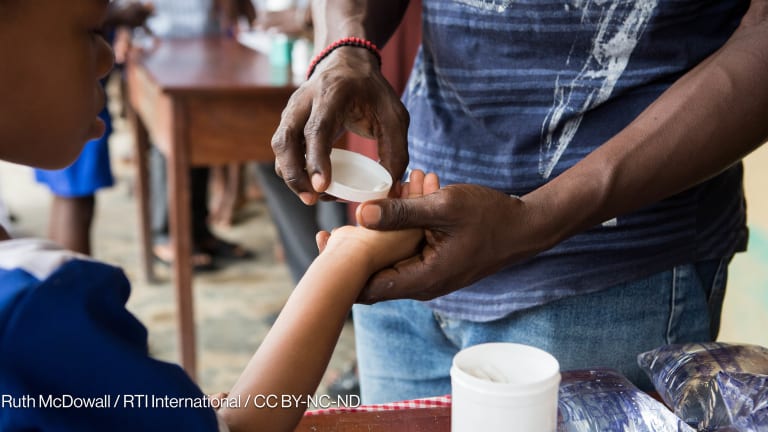
In the fight to control global pandemics, public health agencies and governments face a monumental challenge: The results of around half of all clinical trials are not public, leaving huge gaps in medical knowledge. The invisibility of medical research results may make it difficult, if not impossible, to tell which drugs and vaccines work.
Drug companies have long been criticized for their failure to publish the results of some trials, notably those that cast an unflattering light on their products. However, universities and government agencies often perform even worse. Many funders and institutions fail to monitor whether the results of research are shared, and researchers often find it hard to get trials that return disappointing results published in prestigious medical journals. This missing data can cost missed opportunities, misdirected programs, or even billions of dollars on the wrong drug.
Transparency is improving, but slowly. A handful of countries have passed transparency laws, but they only cover a minority of trials and have not been properly enforced. In the U.S., for example, research institutions are required to post the results of some trials on ClinicalTrials.gov within 12 months of examining the last patient. Yet in 2015, health news site STAT found that pharmaceutical companies, universities and even government agencies routinely violate this disclosure law.
In the EU, a similar provision also requires research institutions to post the results of some drug trials within 12 months. But this regulation, too, remains unenforced.
In recent years, the World Health Organization and United Nations have both pushed for faster results sharing, particularly when a public health emergency is declared. A growing, if still small, list of public and philanthropic research funders now also require trial outcomes to be made public.
Yet getting scientists, funders, and regulators to follow through remains a challenge. “Although there are global standards and initiatives, compliance is still lagging,” Dr. Katherine Littler, a senior policy adviser with the Wellcome Trust, told me by email.
“We have not reached the point where we are sharing clinical trial results in the timely manner that is needed to prepare for future outbreaks and to ensure that results will be shared as rapidly as possible during a public health emergency. This is one issue that needs to be kept high on the global health agenda as it will have impact on many outbreaks of both sporadic and endemic disease.”
Tamiflu
The anti-influenza drug Tamiflu offers one example of what can go wrong. In the wake of the 2006 bird flu and 2009 swine flu outbreaks, 96 countries accumulated enough Tamiflu to treat 350 million people. Over $18 billion was spent on the drug worldwide, including $1.3 billion by the U.S. alone.
The evidence available at the time had suggested that the drug was safe and effective, until researchers discovered that data from eight clinical trials were missing. Neither the WHO, which recommended the drug for influenza, nor national regulators had seen the full data on Tamiflu.
An independent group of scientists took a second look at Tamiflu, and in 2009 they concluded that the drug did not reduce the number of hospitalizations in flu patients. In fact, the negative side effects of Tamiflu seemed to outweigh its benefits.
“It was no better for symptom relief than over-the-counter medication,” one of the scientists, Oxford University professor Carl Heneghan, commented at the time. “The system that exists for producing evidence on drugs is so flawed and open to misuse that the public has been misled."
In June 2017 the WHO downgraded the drug’s status, citing “additional evidence,” and announced that it may completely remove Tamiflu from future guidelines for managing pandemic influenza. Roche, the company behind Tamiflu, continues to insist that the drug is effective.
Ebola
Invisible trial data also undermined global efforts to deal with the 2014 Ebola outbreak in West Africa. Experts discovered that potentially life-saving information from past clinical trials was missing.
“At the beginning of the outbreak there was very little information on non-human primate models for Ebola therapeutics,” Littler told me. “It later became clear that a great deal of information had been generated but not disseminated, which led to major inefficiencies in testing for Ebola therapeutics.”
Meanwhile, desperate doctors were employing treatments such as blood plasma, based on the positive results from a minitrial of just eight patients in 1999. Trials set up during the outbreak indicated that this treatment was ineffective, but their results were not immediately made public. “Negative results made public earlier may have diminished pursuit of this [plasma treatment] in a more timely way,” Armand Sprecher, a public health specialist with Doctors Without Borders, told me by email.
Information sharing on new drugs was also slow. The experimental drug ZMapp was given to a few patients before supplies ran out in August 2014, but researchers held back detailed information on patients’ reactions, reportedly because they wanted to wait until an academic journal had published the results.
In March 2015, the U.S. National Institute of Allergy and Infectious Diseases (NIAID) launched a clinical trial of ZMapp involving 72 Ebola-infected patients in West Africa and the U.S. The trial’s results were published in October 2016, more than eight months after the trial had ended — lightning speed by academic standards, but slow compared to the pace at which pandemics can spread.
Meanwhile, on ClinicalTrials.gov, NIAID reports that the trial only recruited a single patient, rather than the 72 cited in the academic paper. When I reached out to him, Dr. Richard Davey, the deputy director of clinical research for NIAID, explained that the ClinicalTrials.gov entry only counted the one Ebola patient enrolled within the U.S. research center that had also registered the trial, “as opposed to the 71 patients enrolled in West Africa.”
“We agree that this is an obvious point of confusion in how those data are currently described in CT.gov,” he wrote in an email, adding that the trial’s unconventional design made it difficult to share results through that information platform.
Two years into the epidemic, the WHO pointedly highlighted “the fundamental moral obligation to share preliminary results” as rapidly as possible. The Harvard Global Health Institute-London School of Hygiene & Tropical Medicine Independent Panel on the Global Response to Ebola later concluded that “rapid knowledge production and dissemination are essential for outbreak prevention and response, but reliable systems for sharing epidemiological, genomic, and clinical data were not established during the Ebola outbreak.”
The battle today
Several years after the Ebola outbreak, much medical knowledge about the disease remains inaccessible. The world’s largest database of clinical trials, ClinicalTrials.gov, lists 35 completed Ebola trials. Not a single one has posted a summary of its results onto the database, even though 30 trials have already passed the one-year disclosure deadline set by the WHO.
The results of some of these trials can be found elsewhere, usually in academic journals. But in some cases, no results have ever been made public.
Experts estimate that posting a trial’s summary results costs only $2,000. However, scientists often jump straight onto the next project after a trial has been completed. Many are reluctant to spend time on posting old results, and there are few career incentives to do so.
In recent years, the U.N. has tried to rewrite the rules of the game to improve pandemic preparedness. When the WHO declared a public health emergency over microcephaly cases linked to the Zika outbreak in Brazil in February 2016, the Wellcome Trust brought together 30 different health organizations to embrace better and faster data sharing during emergencies.
Later that year, a U.N. panel called on governments worldwide to pass legislation requiring all clinical trial results to be fully reported. And in May this year, the WHO managed to convince over a dozen major public and philanthropic research funders to commit to ensuring that all clinical trials they fund report their results within 12 months at most.
Transparency advocates have welcomed these initiatives. “It's particularly important that funders say they will take a past history of reporting — or of not reporting — results when making future funding decisions, since sticks are as critical as carrots,” Ivan Oransky, a co-founder of the watchdog organization Retraction Watch, told me by email.
“Whether all of this will make a difference is of course to be seen, but these seem like steps in the right direction.”
Update, Nov. 20, 2017: This article has been updated to clarify the Wellcome Trust’s role in bringing together 30 different health organizations to embrace better and faster data sharing during emergencies.
Join the Devex community and access more in-depth analysis, breaking news and business advice — and a host of other services — on international development, humanitarian aid and global health.








